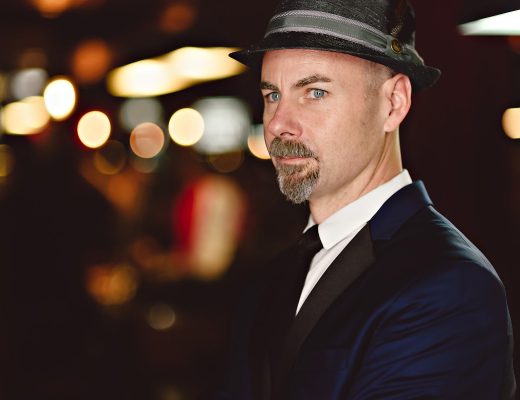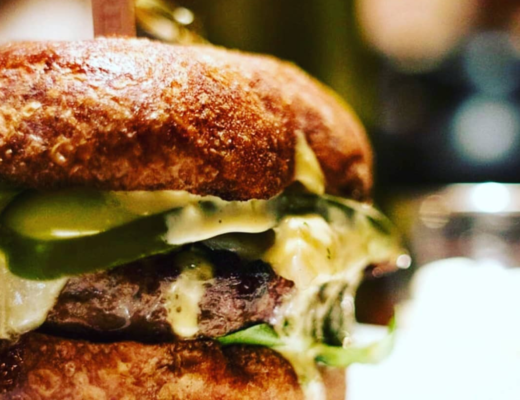Fritz Hatton is the opera-loving, Beethoven-playing proprietor of Wine Access member-favorite winery Arietta, which (for more than two decades) has produced some of the most elegant, Bordeaux-inspired wines in Napa Valley. It’s no surprise his flagship wines have been called ringers for Cheval Blanc—Fritz is also America’s preeminent wine auctioneer, and tuned his palate with the best of Bordeaux and Burgundy before setting his sights on Napa Valley terroir.
This week, in tandem with our first-ever offer of Arietta’s flagship Red Wine H Block Hudson Vineyards (a true Cheval Blanc ringer—keep reading), we sat down with Fritz to over a bottle of Arietta to discover his inspiration and his influences… musica, vinous, and otherwise.
Wine Access: How did you get into wine?
Fritz Hatton: My father was a Francophile, and if he had not enjoyed wine faster than he purchased it, we would have had French wines on hand at all times. We lived in Michigan, an expensive state for imported wine, so much of it was “bootlegged” across the border from Chicago. My parents offered us wine mixed with water from time to time when we were quite young—I think the wine was Beaujolais. As I grew older my interest was piqued enough to check out the bottles that arrived at our house. I remember one special delivery which included multiple bottles of Lafite 1947 and 1948, and Châteauneuf-du-Pape La Gardine 1955. After inspection I placed them carefully on a rack in the closet next to the furnace. I suspect that the wine was consumed even before it became heat damaged.
During college I worked a summer job in my hometown, helping to open a wine and cheese shop, the likes of which had never existed there before. Much of the inventory had to be “tested” before it was shelved, and that summer I was bit by the bug. My moment of revelation (or “wine epiphany”) emerged from a bottle of Corton Clos du Roi 1966 drunk with my godparents on a steamy August evening on their terrace overlooking Spring Lake.
My summer bonus was seven mixed cases of wine, ranging from Corbieres to Richebourg, which I drove back to college. At a bottle per night, that was a semester’s worth of tasting with classmates in the dining hall, or standing at fireplace mantles in our rooms. Thereafter, I rarely walked past a wine shop without walking in.
The first things I read in the morning were the wine ads in the New York Times, and started planning my purchases. I would drive to New York, and shop for myself, friends, faculty, and my club, and return with a station wagon full of wine.
The oil crisis had caused the prices of wine to collapse, so we were drinking Bordeaux great growths for $2.99, like Cantenac Brown to $5.99 for Léoville Las Cases. First growths were $13.99—too expensive for us, so we relied on the charity of local collectors to share them.
WA: Tell us about the inspiration behind Arietta, the name and the wine itself?
FH: The Arietta wine project was born of a passion for classical music shared by the Kongsgaards, our original partners, and the Hattons. Our search for a name bore fruit when Caren Hatton told me to go back to my music books. In a true “Eureka” moment, my Beethoven Sonata book fell open to the Arietta movement of the last sonata, Opus 111. It is a revolutionary and revelatory movement, rising from a natural serenity to a state of enlightened nirvana that is an inspiration for the experience tasting a great wine. The word Arietta is the diminutive of Aria, meaning a short aria or song.
The vinous inspiration of the Arietta project is also something small, precious, and extraordinary—the 2.4 acre H Block Cabernet Franc planted by Lee Hudson on his Carneros Ranch in 1986. John Kongsgaard wanted to make a wine featuring this block since his days at Newton. The first vintage of this wine, now called Arietta Red Wine H Block Hudson Vineyards, was 1996. John, Lee, the oenologist Michel Rolland, and others thought this block was extraordinary, and capable of producing wine in an old world style. We decided to add Merlot to the blend, also from Lee Hudson. Arietta H Block was one of the first reverse Right Bank style wines produced in Napa—a blend similar to Cheval Blanc in Bordeaux.
WA: On any given weeknight, what are you most likely to be drinking?
FH: Arietta White Wine On The White Keys is our nightly martini, or Arietta reds old and new (we keep a complete Library at home). Also, White Burgundy, and on rare occasions red Burgundy (too expensive for us now). We also enjoy Barolo, Barbaresco, Brunello, Châteauneufs, and of course other Napa reds! But we always finish with white wine.
WA: What wines inspire you?
FH: So many! Old Inglenooks and Martha’s Vineyard Cabernets, Dalla Valle Maya, (on the rare occasion someone shares!), great aged Bordeaux, Burgundy, usually with stems (Rousseau, DRC), Barolos, usually 20+ years old (except Burlotto)
WA: How has your approach to wine changed over the years? How has the region you work in changed?
FH: Living mostly on the West Coast since 1992 has acclimated me to power in red wine, though not overripeness. So, our Arietta wines satisfy my thirst for Bordeaux style wines. I think of wine mostly in the context of having dinner, and with changes in cuisine over the last couple of decades, I drink a higher proportion of white wine and need the wines to have a good backbone of acidity.
WA: What’s the funniest thing someone has ever said to you about your wine?
FH: “I know Cheval Blanc! It is my favorite wine!! I can smell it across a room!!! And this is definitely the Cheval Blanc!!!!”
WA: What brings you the most joy?
FH: Playing the piano.
WA: If you could make wine from any other region in the world, where would you go?
FH: New York City.
WA: What’s the #1 thing you want all wine drinkers to remember?
FH: There’s no right answer—except to look for balance.
WA: How did you get started in the auction business, which has left you the preeminent wine auctioneer in the country?
I went to work for Christie’s in 1980 to help organize their commercial wine auction program in the U.S. Soon after I was brought into management. It was “suggested” that I take the in-house auctioneering course, so I did.
Those who survive the course are “thrown to the wolves” selling the cheap stuff to the trade, who loved to harass freshmen auctioneers. I survived the hazing.
Two years later The Peninsula Center for the Blind in Palo Alto organized a charity wine auction, and phoned Christie’s. I was nominated to go, even though I had never done a charity auction before. That was 95 lots in 100 degree heat, in full sun. We all learned a lot. The event will celebrate its 38th year in September.




